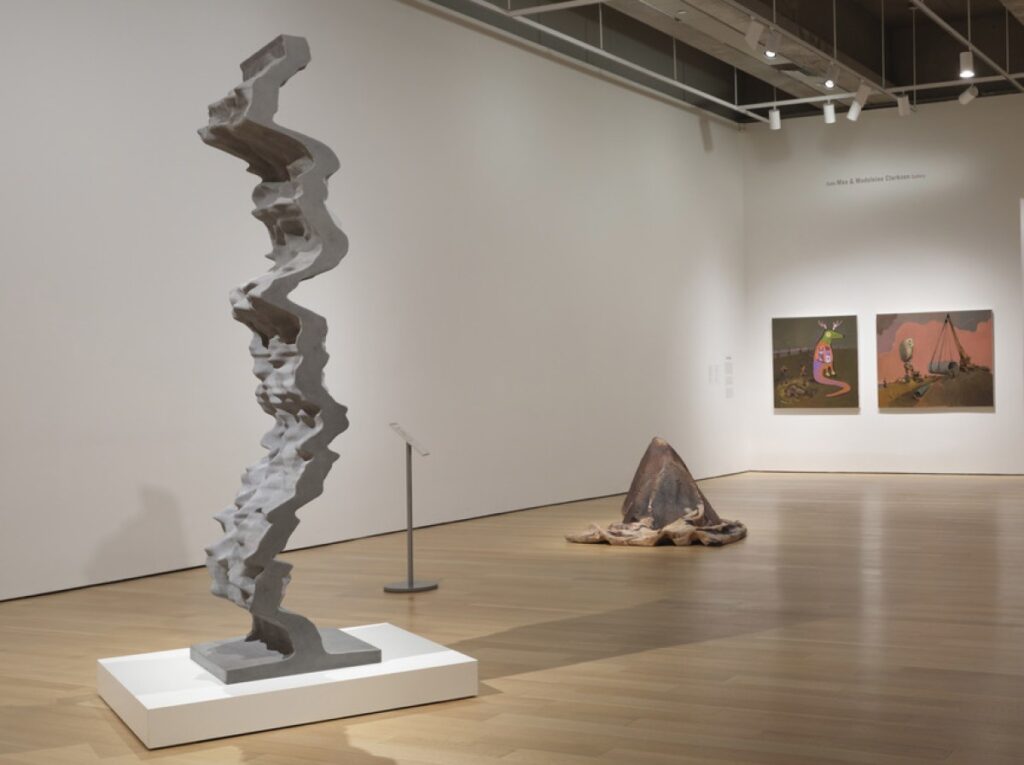This National Day for Truth and Reconciliation, we highlight the internationally acclaimed work of Caroline Monnet, on view in the J.S. McLean Centre of Indigenous + Canadian Art.

September 30 marks National Day for Truth and Reconciliation. This day, coinciding with Orange Shirt Day, recognizes the impact of the residential school system while honouring the children who never returned home and the survivors of residential schools, along with their families and communities.
The AGO recognizes this day through continued learning guided by Indigenous art and artists. At its core, the J.S. McLean Centre for Indigenous + Canadian Art on Level 2 is dedicated to contemporary Indigenous art in its galleries. One place to begin is with the work of Anishinaabe/French artist Caroline Monnet.
Monnet works interchangeably among media from film, installation and sculpture, reconfiguring industrial materials into distinctive hybrid forms. Her acclaimed practice comments on the complexities of Indigenous identity and the impact of colonialism.
Monnet materializes sound into monument with The Flow Between Hard Places. A towering presence, it’s a vertical concrete sculpture that embodies a soundwave of the word pasapkedjinawong (the Anishinaabemowin word for “the river that passes between the rocks”), as spoken by Elder Rose Wawatie-Beaudoin. Like steady river waters, these undulating waves echo the rise and fall of the pitch and tone of the soundwave. Monnet is referencing a pivotal moment in her ancestry when in the 1800s, Chief Pakinawatik from Kitigan Zibi (Maniwaki) and 60 other Algonquins travelled on 600 kilometres of waterways to ask the Governor General in Toronto to return parts of their traditional territory. These concrete waves symbolize speaking truth to power, the transference of knowledge, and the passage of time. “It’s important for people to have different types of monuments,” Monnet has said about the work. “In this case, the idea of using a sound and materializing into a sculpture that can become a monument is interesting, as is representing water as a monument. … It’s also quite contemporary, because we need those movements still today, when it comes to the environment, Indigenous rights, or any human rights around the world – we need people who are willing to travel that distance to be heard.” This work was commissioned by the Toronto Biennial of Art in 2019 and is the first work by Monnet to enter the AGO Collection.
You can read more about First Nations work in the AGO Collection in this week’s AGOinsider.